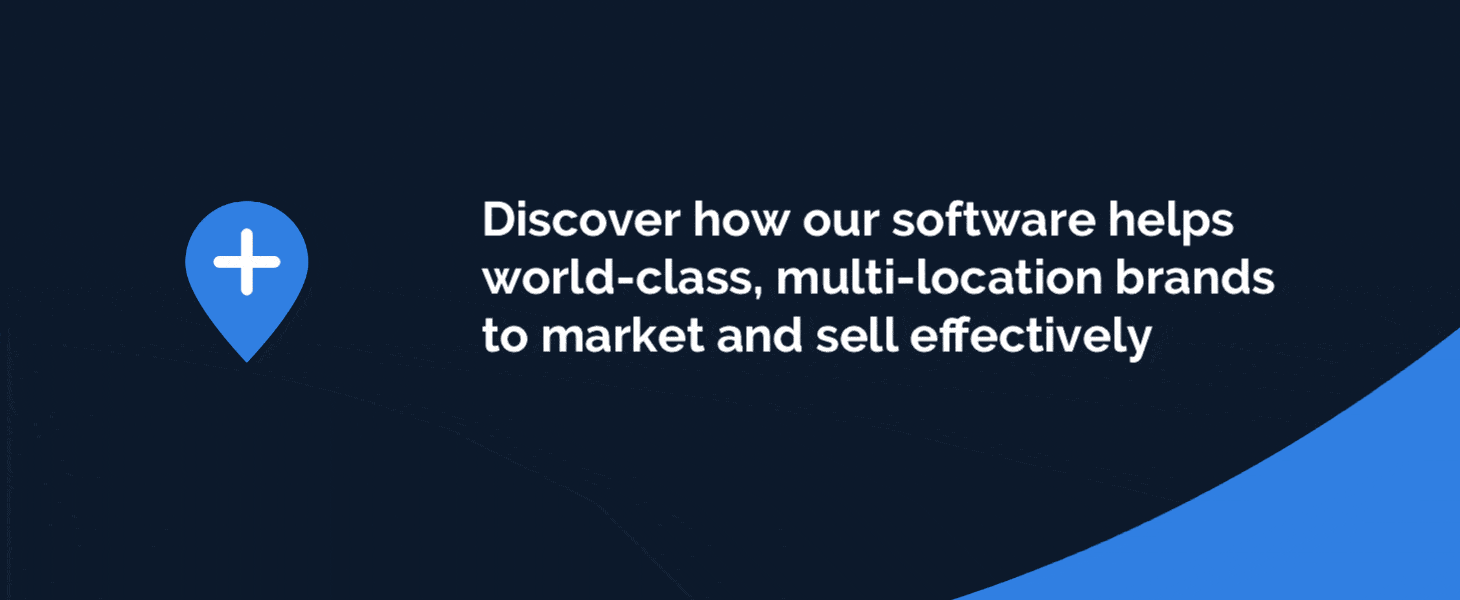Technology analysts have predicted that artificial intelligence (AI) will transform pretty much every domain of human activity.
One of the first of the domains on the automating block is local marketing.
The analysts paint a picture of a world in which franchisees, resellers, etc., no longer have to think about marketing their businesses to local communities, because AI will do the thinking and the doing for them.
AI will, the experts tell us, plan each franchisee’s advertising and marketing campaigns based on the business’ recent results, available budget, and local competitive conditions.
AI will then execute, from concept to completion—without the need for human intervention.
Email, social media and online advertising campaigns will be composed on the fly and delivered to audiences that are designed and targeted programmatically.
Landing pages will be assembled, posted, optimized and retired in the same automatic way.
On-premise materials—from menus to table tents to window clings to A-frames and beyond—will be designed by machine, written by machine, and delivered to the franchisee’s front door just in time for deployment.
And every aspect of this effort will be guided aesthetically by brand guidelines and rules, to ensure that the activity not only builds the franchisee’s business locally, but reinforces the brand, globally.
It may sound utopian. But this hands-free, uber-efficient marketing future is on its way—for brands that are willing to build the foundations for it today.
In this blog post, we’ll talk about the foundational steps brands need to take today, to make sure they are positioned to take advantage of the full potential of AI tomorrow.
Foundation 1: Modularize Your Content
In the traditional world of marketing, content was inextricably linked to its design. Every piece of marketing communication—from business cards to broadcast TV spots, was handcrafted by a studio artist. This made sense in a one-to-many communications environment. The investment in handcrafted design would be amortized across thousands, or millions of impressions.
But today, marketing is much more a one-to-one or one-to-few affair. And that means brands need a level of scale in execution that the handcrafted approach simply can’t sustain. At a recent conference of in-house agencies, one creative leader in the insurance industry showed how his team has had to support a 5-fold increase in the number of projects executed annually, with no increase in in-house staff or external agency budget.
To cope with that pressure, creative leaders need to transform the conventional studio process into a creative assembly system that’s capable of combining the right text and image content into the right document format with as little intervention from studio professionals as possible.
Figure 1 depicts a typical creative assembly system. Note how it separates product content and images from local (franchisee) content and images, and then allows for these various elements to be assembled into brand-approved design templates that span all offline and online document types.
Figure 1
There are two basic ways to set up a creative content assembly system like this. One is to develop your own, by combining a standalone DAM with a studio automation tool like Adobe Indesign Server. This approach is most appropriate for teams that have highly advanced Indesign automation skills and easy access to scripting skills and experience.
The second approach is to implement a standardized local marketing platform. This approach insulates you from the need to develop advanced Indesign Server scripting skills. It also provides you with access to a broad range of features so that you can gradually extend and enhance your implementation as your needs evolve.
Foundation 2: Segment Your Local Markets
The second element in a strong foundation for AI-assisted local marketing is clear segmentation of your local marketing community. Some brands organize by region; others segment by market; still others will do so according to an assessment of marketing maturity. Whatever the organizing principle, segmentation will help you to put the most relevant local marketing options at the fingertips of each affiliate, so they spend less time searching for a tactic, and more time implementing the best tactic for them. In fact, this kind of segmentation is often the single most important aspect of user adoption – and it can be achieved even before the benefits of machine learning or another advanced technology kick in.
The key to proper local segmentation is to ensure that your platform can distinguish not only between different kinds of users but between different kinds of locations. You should also ensure that your platform allows users to be associated with one, several, many or all locations. This flexibility will enable you to organize content so that it’s more relevant; configure approval processes so they’re more efficient, and connect to downstream vendors to make brand activation more cost effective.
Foundation 3: Build Results Based On Feedback Loops
One of the great promises of AI is that content can be optimized over time, based on results. In local marketing, this means the content served up to each location should be tailored based on the results achieved by that location and locations that share attributes with it.
Once you’ve modularized your content, and segmented your local marketers, you’ll be in a perfect position to begin optimizing based on those local results. The results you measure may start out relatively simple—for instance, you might deploy content to a location based simply on the content’s popularity with similar location (this is similar to Amazon’s recommendation engines). Over time, you can begin to optimize content based on its ability to move the sales dials for locations of a given type. And, in time, you can optimize content for individual locations based on the templates they use, and the customizations they employ.
Your local marketing platform should support this gradual increase in sophistication by allowing you, at a minimum, to share successful executions quickly and easily across locations. It should also allow you to quickly and easily create groups of locations based on parameters of your choosing, and to deploy creative to that group specific to its needs.
Conclusion: The Future of AI is Here Today—For
Now that the honeymoon period for AI has concluded, we are hearing more and more stories about the challenges early adopters have faced. These bumps in the road are typical for any new and transformative technology; don’t let them discourage you or dissuade you from pursuing a committed AI marketing strategy.
By modularizing your content, organizing your local marketing community strategically, and then deploying content and monitoring results, you can pave the way to the AI-powered future we first described. That future will not be one in which humans disappear. Far from it. Instead, we’ll see marketers who have mastered the art of making great brands scale more efficiently and —yes—intelligently than previously imagined possible. It’s time to prepare the way for that future by laying the foundations for your brand.






